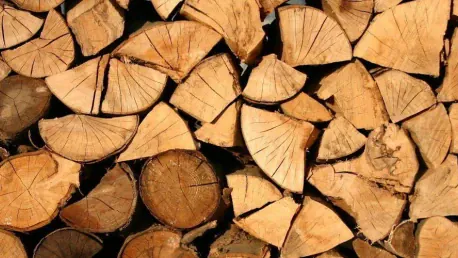The small town of Petawawa in Ontario could soon become a beacon for renewable energy, thanks to an innovative proposal by Torchlight Bioresources. The company has put forth the idea of creating a wood chip-fired combined heat and power (CHP) plant. Dr. Jamie Stephen, the head of Torchlight Bioresources, recently presented this game-changing concept to the Petawawa council, seeking a letter of support to conduct a feasibility study. The study aims to evaluate the project’s scale, potential costs, and the possibility of connecting to the nearby Canadian army base, Garrison Petawawa. The goal is to make use of local wood waste, converting it into a reliable source of both heat and electricity. This would not only contribute to the sustainable energy agenda but also support the local economy by repurposing waste.
Biomass as a Solution
The proposed biomass plant would rely on wood chips to generate both heat and electricity, effectively addressing several pressing issues in the region. One of the most significant concerns is the declining demand for sawmill residues and low-grade timber, which has been exacerbated by the dwindling number of pulp and paper mills in Ontario. Dr. Stephen emphasized that using these local wood residues would not only support the forest sector but also ensure that energy expenditure remains within the region. By recycling what would otherwise be waste, the project aims to create a sustainable energy cycle that benefits all stakeholders, from local businesses to residents.
One of the standout advantages of this biomass CHP system is the minimal infrastructure changes required for its implementation. Garrison Petawawa, for example, already operates a district heating system that could transition to alternative fuels with very few adjustments. In his presentation, Stephen pointed out that district heating is not a new concept; it is already extensively employed around the world, with Stockholm, Sweden, serving as a prime example. Stockholm successfully heats all its buildings through a city-owned district heating system, which uses approximately 1 million tonnes of wood chips annually. This global example underscores the feasibility and effectiveness of the proposed system.
Filling the Renewable Energy Gap
Canada has been slower to adopt district heating compared to European countries. While much of Europe sees up to 60% of its renewable energy come from bioenergy, Canada has lagged behind. However, Petawawa is already making strides toward sustainable energy practices. The town produces biogas at its Water Pollution Control Plant, which shows a commitment to renewable energy solutions. Integrating a biomass CHP plant into this existing framework could pave the way for even greater contributions to sustainable energy, reinforcing the town’s dedication to reducing its carbon footprint.
The integration of a biomass plant into Petawawa’s energy landscape could have far-reaching implications. Not only would it help manage local wood waste more effectively, but it could also serve as a model for other communities in Ontario and beyond. By taking a proactive approach to energy sustainability, Petawawa could inspire other towns and cities to explore similar initiatives, thereby amplifying the impact on a broader scale. The feasibility study, if supported, will delve into the nitty-gritty details of the project, including its technical, economic, and environmental aspects, ensuring that it can deliver on its promises.
Economic and Environmental Impact
The economic benefits of the proposed biomass CHP plant are considerable. By utilizing local wood residues, the project would provide a new revenue stream for the forest sector, which has been struggling with declining demand. This would not only help sustain local businesses but also create new job opportunities within the community. Moreover, keeping energy expenditure local means more money circulates within Petawawa, boosting the overall economy. Dr. Stephen highlighted that this localized approach to energy production aligns perfectly with broader economic development goals.
From an environmental perspective, the advantages are equally compelling. Biomass energy is considered carbon-neutral, meaning that the CO2 emitted during its combustion is offset by the CO2 absorbed during the growth of the plants used for fuel. This makes it a much cleaner alternative to fossil fuels. Additionally, by converting waste wood into energy, the project reduces the need for landfill space and lessens the environmental impact associated with waste disposal. This holistic approach ensures that the initiative supports both economic and environmental sustainability.
Conclusion and Future Steps
Canada has been slower to embrace district heating compared to Europe, where up to 60% of renewable energy is sourced from bioenergy. Despite this lag, the town of Petawawa is making significant strides in sustainable energy. Its Water Pollution Control Plant produces biogas, demonstrating a commitment to renewable energy. Integrating a biomass combined heat and power (CHP) plant into this framework could significantly boost Petawawa’s sustainable energy contributions, further reducing its carbon footprint.
The inclusion of a biomass plant in Petawawa’s energy mix could offer far-reaching benefits. Not only would it provide an efficient way to manage local wood waste, but it could also serve as a model for other communities in Ontario and beyond. Petawawa’s proactive approach to energy sustainability could inspire other towns and cities to pursue similar initiatives, thereby expanding the impact on a larger scale. The upcoming feasibility study, if supported, will thoroughly explore the project’s technical, economic, and environmental aspects to ensure it can meet its goals and deliver on its promises.









